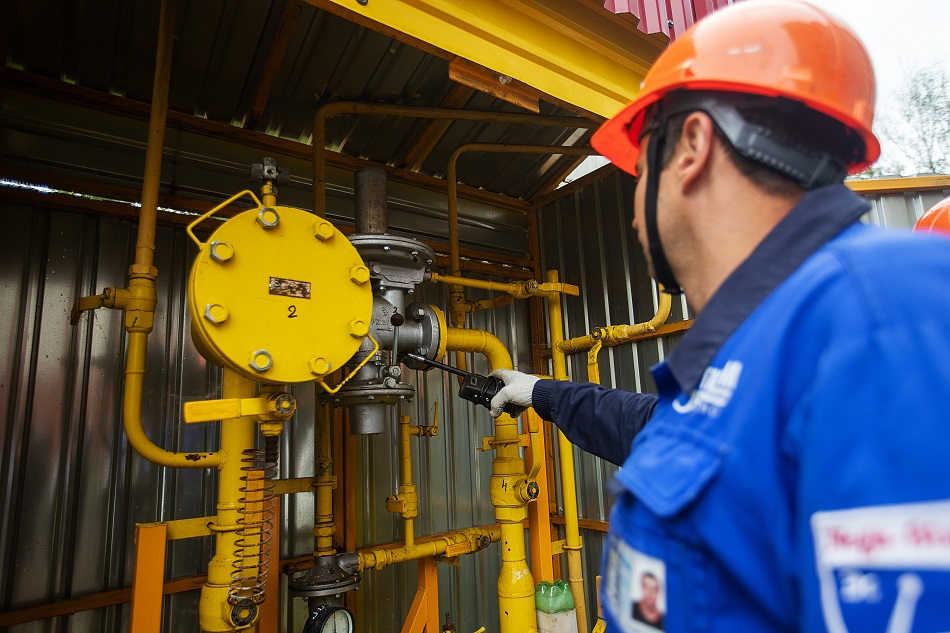Employees in the farming, marine, petrochemical, and mining industries can suffer serious health risks from exposure to hydrogen sulfide (H2S). In portable and personal gas detectors and permanently installed gas detectors, the accurate detection of H2S is integral to the health of people working in these industries.

Image Credit: EvGavrilov/Shutterstock.com
Hydrogen Sulfide Hazards
Hydrogen sulfide has no color and has a characteristic smell of rotten eggs. The gas is extremely dangerous. It is so harmful to the human respiratory and nervous system that it was employed as a chemical weapon in World War I.1
Hydrogen sulfide is very poisonous and acts as both a chemical asphyxiant (interfering with oxygen utilization in the body) and an irritant. Symptoms can emerge after a single breath.2 Exposure to the gas at low levels can cause nausea, coughing, eye irritation, and an accumulation of fluid in the lungs.
Moderate concentrations result in more harmful irritation of the respiratory system and eyes, while high concentrations of H2S can cause instant loss of breathing and collapse, with a high potential of death. An exposure of only 1112 mg/m3 (800 ppm)7 for a period of five minutes is a lethal dose for 50% of the human population.
H2S is also highly flammable and corrosive and can be explosive when interacting with air. The hazard presented by the gas is significantly enhanced by the fact that it is thicker than air, which means in poorly ventilated locations, it tends to gather close to the ground.
Hydrogen Sulfide in Industry
H2S is naturally found in natural gas and crude petroleum. It is emitted practically anywhere that elemental sulfur interacts with organic material, particularly at high temperatures. This means that agriculture, sewage treatment, and petroleum processing and drilling are all sources of H2S.3
It is also an issue for several industries. In the construction industry, it can be emitted during excavation projects in old landfills or swamps, and it is the main byproduct in paper manufacturing.
H2S may also be produced as a byproduct in any manufacturing location that employs coke ovens or iron smelters. For many industries, the accurate detection of H2S is essential.
Detecting Hydrogen Sulfide
Contemporary gas detectors can measure H2S concentrations in the air to a high degree of accuracy.4 The installation of permanent gas detectors in high-risk locations and supplying employees with portable gas monitors ensure that the facility and its personnel are protected with ease.
It is crucial to ensure that gas detectors are calibrated and tested, which is particularly true for H2S due to the serious hazards related to it. Users should understand the health risks when calibrating and bump testing H2S detectors.
Tests are performed with H2S at low concentrations, which are usually provided in disposable canisters. As H2S is corrosive, stainless steel regulators are suggested for use in combination with suitable tubing.5
Air Products supplies H2S reference mixtures in exact concentrations to make sure that calibration and bump tests of this harmful gas can be performed as safely and accurately as possible.6
The portable non-refillable canisters from Air Products are supplied in a selection of sizes to offer the ideal combination of portability and volume for the testing requirements of the application.
References and Further Reading
- “GAS!” — The Story of the Special Brigade - Major-General C. H. Foulkes -
- OSHA FactSheet: Hydrogen Sulfide. (2005).
- Work Safe BC: Hydrogen Sulfide in Industry.
- Detecting Hydrogen Sulfide Gas and Understanding its Danger in the Field. (2015). Available at: https://www.emerson.com/documents/automation/technical-note-detecting-hydrogen-sulfide-gas-understanding-its-danger-in-field-rosemount-en-72142.pdf. (Accessed: 22nd June 2020)
- Light, convenient and easy to use. Your mixtures, everywhere with no hassle at all. Available at: https://www.airproducts.expert/uk/oneuse/technology.htm. (Accessed: 22nd June 2020)
- Hydrogen Sulphide, Toxicological Overview - https://www.gov.uk/government/publications/hydrogen-sulphide-properties-incident-management-and-toxicology (Accessed August 2020)

This information has been sourced, reviewed and adapted from materials provided by Air Products PLC.
For more information on this source, please visit Air Products PLC.